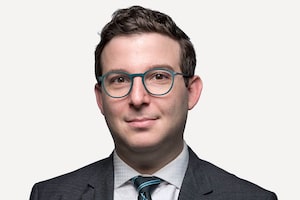
Investors are starting to demand more transparency about how the mutual fund fees they pay are calculated.William_Potter/iStockPhoto / Getty Images
Sign up for the new Globe Advisor weekly newsletter for professional financial advisors on our newsletter sign-up page. Get exclusive investment industry news and insights, the week’s top headlines, and what you and your clients need to know.
Canadian mutual fund fees are falling. For investors, that means lower costs, but the trend also reflects rising client expectations for advisors.
Increasing price competition among investment fund providers is the primary driver of price cuts, experts say, although they also point to longstanding issues with portfolio construction and demands for more cost transparency as contributing factors. In addition, many have realized that higher fees and more complexity don’t translate into better returns for clients.
Capital Group Canada was the latest mutual fund company to announce that all 10 of its Canadian mutual fund products will see management fee reductions of up to 20 basis points.
The trend has been a gradual one, says Dan Hallett, vice president of research and principal at Highview Financial Group in Oakville, Ont., “but there was a time not long ago when price competition was unheard of in Canada’s investment fund industry.”
Now that competition is starting to accelerate, Mr. Hallett says mutual fund providers and advisors who sell their products are being forced to reckon with disappointing outcomes for investors in part because fees have eaten away at long-term returns.
“It really is this disconnect between what people expect going in because of the returns they saw posted prior to their investment, which lured them in, and their returns afterward,” he says. “You have a lot of people who were very disappointed in their outcomes over 10 to 15 years.”
Those are sufficiently long periods during which expectations are supposed to materialize and they didn’t for many people, he adds.
Kendra Thompson, consulting partner at Deloitte Canada in Toronto, says investors are also starting to demand more transparency about how the fees they pay – for both the funds they hold and the advice they receive – are calculated.
Shifting regulatory priorities have played a role in the rise of fee competition as well, she adds. Regulators have recently begun to expand their focus beyond simply cracking down on bad actors and more on suitability.
The result, Ms. Thompson says, has led to more advisors putting an emphasis on products that are more suitable and easier to explain to clients. They’re also more likely to match the investing strategies of a larger proportion of the population.
Adding more services while having fewer products
Not only are fees coming down, but mutual fund managers have also been embedding more services into their products over the past two decades, according to Toronto-based ISS Market Intelligence subsidiary Investor Economics.
That’s particularly the case with asset-allocation solutions, says Carlos Cardone, senior managing director at Investor Economics.
“[Investors] are getting an active asset allocation with 20 or 30 people around the world looking only at the allocation of their product, spanning over 120 asset classes and deciding what goes where on a weekly basis,” he says.
In addition, cost savings and increased efficiencies within dealers are driving down fees by reducing management costs, which Ms. Thompson says is “threatening” for some advisors.
While that could mean reducing the total number of mutual fund products available on advisors’ shelves in an effort to become more efficient and keep up with competitors, the result can be a narrower – and often lower – range of fee options that can make some advisors feel uneasy.
“Part of what happens as the industry tries to rationalize product shelves or tool sets or make things more integrated is advisors lose some of the control,” Mr. Thompson says. “They’re nervous that something is going to be disrupted or someone is going to contact [their] client whom [they] won’t know or someone is going to challenge the strategy [they] have always had.”
Are fees really falling that fast?
Taken all together, it might appear as though Canadian mutual fund fees are falling even faster than they are in reality, according to James Gauthier, vice president of investment products and platforms at iA Private Wealth Inc. in Toronto. That’s because the industry has been shifting gradually from A-series mutual funds, which have compensation embedded, to F-series mutual funds, which don’t.
“As you shift gradually to F-series funds from A-series funds, it’s going to sort of look like fees are coming down when they’re not,” Ms. Gauthier says, noting that even F-series fees have also been declining in recent years.
Despite the long-term declines, Tim Huver, head of intermediary sales at Vanguard Investments Canada Inc. in Toronto, believes prices will likely continue to fall.
“There is still room for the market to move in the direction of lower cost,” says Mr. Huver, citing F-series funds fees recently dipping below 1 per cent fees. In contrast, he points out that the average Vanguard mutual fund fee is below 60 basis points.
There is also “an awakening” among advisors, he says, dispelling the “misconception that higher cost and complexity equals better outcome.”
“There is no correlation between higher cost and better performance, it is actually the opposite where higher cost eats away at your return,” Mr. Huver says.
No matter how much further fees fall, Highview’s Mr. Hallett says avoiding returns that fall short of investors’ expectations will ultimately be the job of the advisor.
“Being in a lower-fee environment isn’t going to solve the main problem of poor portfolio construction and performance-detracting behaviour,” he says, “those things have nothing to do with costs.”
For more from Globe Advisor, visit our homepage.
 Jameson Berkow
Jameson Berkow